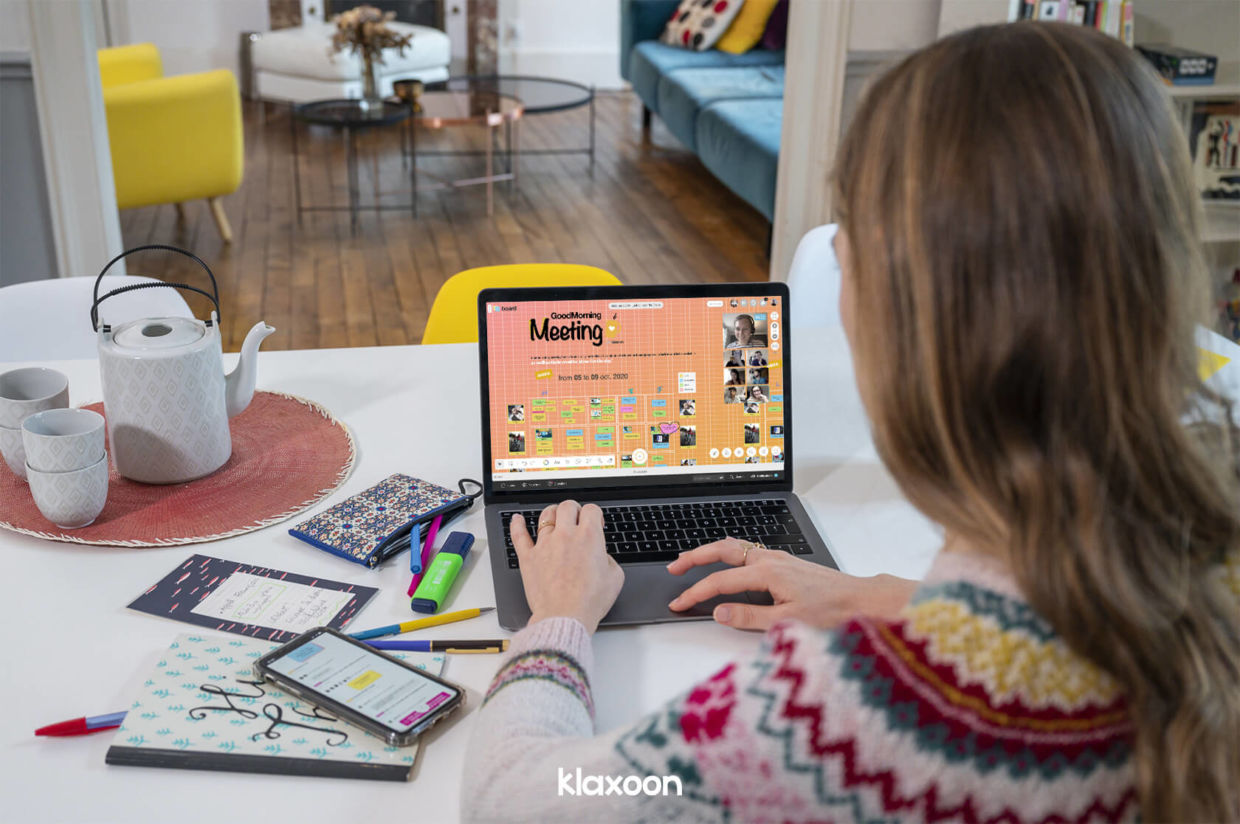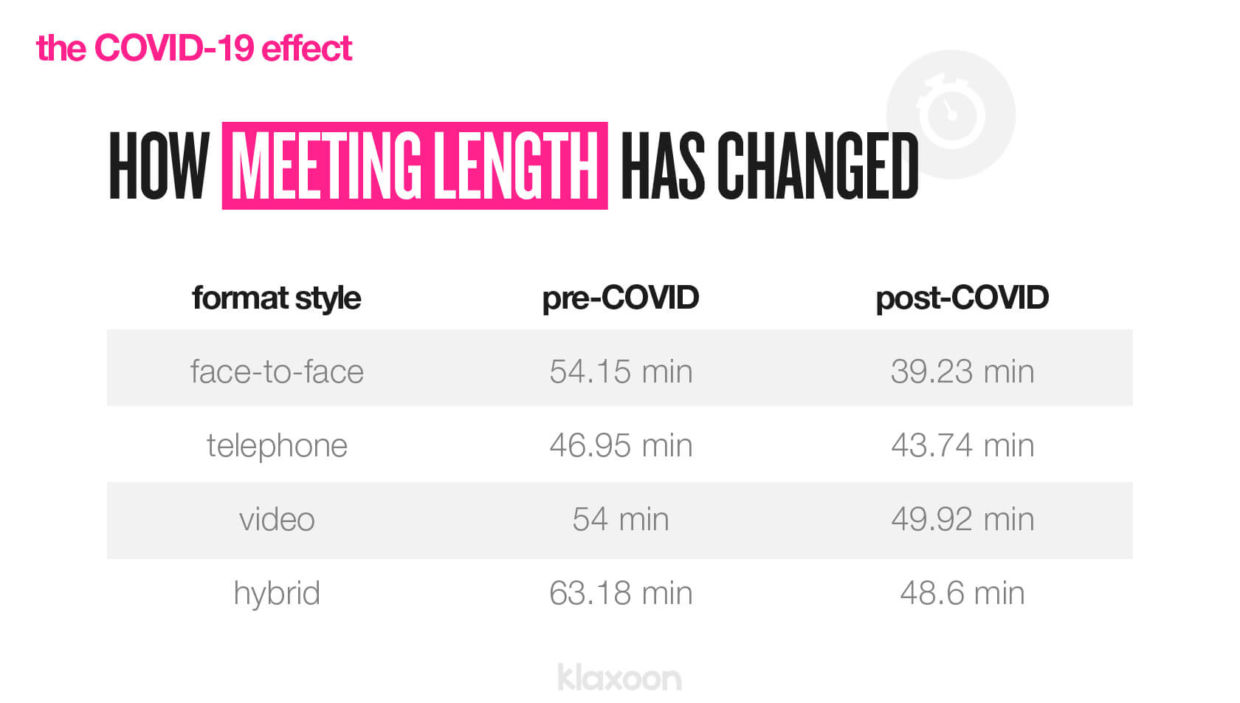Supercharge your virtual meetings with evidence-based practices
Published on February 14, 2025
Supercharge your virtual meetings with evidence-based practices
For companies across all industries, shifting to virtual meetings as a response to the global pandemic was sudden and often chaotic. Instead of reflecting on what worked best, they concentrated on what was working now. Being suddenly virtual in nearly every meeting, often without the tools, the training, or the expertise to optimize for better outcomes for attendees and businesses has had major impacts. Understanding and adjusting to those impacts with the right tools and new ways of working has become a competitive advantage.


We recently sat down with Dr. Joseph Allen during a Klaxoon Live Talk to get a snapshot of his latest research and better understand how meetings have changed over the last year. Joseph A. Allen, Ph.D., is a Professor of Industrial and Organizational (I/O) Psychology at the University of Utah and directs the Center for Meeting Effectiveness housed in the Rocky Mountain Center for Occupational and Environmental Health. He has more than 100 publications in academic outlets and has presented over 250 papers/posters at regional and national conferences. He’s given more than 100 talks at academic and non-academic settings worldwide and is often featured in WSJ, Financial Times, and INC.
The first significant way our meetings have changed is in their format. Dr. Allen’s research measured four different format styles and what frequency they were used. The different meeting formats were: Face-to-Face, Telephone, Video, and Hybrid. Before the global pandemic, close to 80% of our meetings were face-to-face and only 4% were virtual video meetings. The move to work-from-home has profoundly changed how we meet. The inability to come together and meet in the same room has forced a giant leap to video, with over 60% of our meetings now in a video conferencing format. Those shifts in formats have had a dramatic effect on outcomes as well.
Changing formats has led to a change in the meeting experiences for all attendees.But what are the impacts of such a major shift from meeting in-person to meeting virtually? What does this mean for collaboration? Are attendees participating as much, and do they leave meetings satisfied? Going full virtual has actually reduced the length of time spent in a meet.
Meetings are shorter and Dr. Allen’s research illustrates that across the board every single meeting format has shrunk in length. On average, face-to-face and hybrid meetings have seen the largest decrease by shaving off 15-minute per session. For many, those numbers can be seen as good news. The decline of time spent in meetings can be attributed to the fact that we’ve become more goal-driven in virtual settings. In many cases, that means less time is spent for friendly banter and “how ya doin’?”.
Also gone are the “gathering” components of traditional office meetings when people walk into the room and have to wait for someone late. The gathering element of in-person meetings, on average, lasts 3 to 5 minutes.
Going full virtual has people entering at a click of a button and getting started faster, omitting some of the social interactions we had before. Research also shows that the perception of meeting effectiveness during these virtual moments remains on par with regular face-to-face meetings. This research is reassuring organizations that team effectiveness can be robust in an all-virtual environment.


The unchecked increase of repeated and repetitive video conference meetings in our daily schedules has led to terms like “zoom fatigue” and burnout becoming more common. That feeling, which is sometimes hard to explain, involves the increase of surface acting that we are required to do every single workday. The emotional labor of having a webcam pointed at your face 8 hours a day cannot be understated. As humans, we have the ability to regulate our emotions, which is called emotion regulation. Daily, we choose how excited or angry we get about something.
Workings in customer service or client-facing roles are expected to provide service with a smile, even if they are having a bad day. That goes for work meetings too. Daily expectations require cordial communication and when office hierarchies are involved to get excited about the boss’s ideas. We engage in surface acting when we intentionally portray emotions that we aren’t currently feeling.
A certain amount of surface acting is expected and required to maintain group cohesion. Research has shown that using surface acting to regulate emotions often results in emotional dissonance, which in turn leads to many negative outcomes such as increased stress levels and burnout. Pre-pandemic research showed that in meetings the average attendee occasionally did some surface acting.
The combination of completely changing where and how we work by going full virtual in addition to the added stress of a global pandemic has brought about a significant upsurge of surface acting by meeting attendees. The video conferencing element is more tasking because certain outside factors we cannot control begin to accumulate over time. From family matters to poor bandwidth, or just the barking dog, these added frustrations compel meeting attendees to hide emotions have become one of the main drivers of the fatigue we experience each day, week, and month.
As some workers begin to return to the office the new normal will make hybrid meetings commonplace. Hybrid meetings will add a certain complexity that many organizations aren’t prepared for. A hybrid meeting is when some attendees join from the office and another part joins remotely, enabled by audio and video conferencing. By capitalizing on two different meeting formats (face-to-face and video) the increase of hybrid meetings could be challenging when striving for seamless collaboration as a team. Some of the opportunities that hybrid meetings present are the ability to still collaborate with a global team while also having the possibility of serendipitous side conversations. But that will also open up the prospect of two separate meetings happening at the same time
New skills and habits will be required of meeting leaders and facilitators to help attendees fight the urge to collaborate more with those who are in the same room or close proximity. Overall hybrid meeting satisfaction can be guaranteed by assuring that a level playing field is created between attendees in the office and those remote. The ability to pick where we work best while still able to make connections across distances make the influx of hybrid meetings into our future work life a tantalizing prospect.
Their adoption and success will be determined by our desire to once again reimagine how we work as a team. High performing organizations will make sure they accommodate equally between WFH and office based workers while adopting best practices that are inclusive and create a culture that engages employees wherever they do their best work.
To make sure your teams have the energy and ability to collaborate efficiently, Dr. Allen’s research shows that focusing on meeting recovery has become vital. Studies show that after a bad meeting, it takes a whopping 17 minutes to recover. But even your good meetings require, on average, 5 minutes of recovery and transition time. But that isn’t how most people schedule their days.
A glance at most work calendars will show meetings scheduled, back-to-back-to-back with no breaks in between. And hoping for a meeting to go short is a rare occurrence. To combat this Dr. Allen recommends reducing all meetings in length by 10%. So if you have a 30-minute meeting cut it down by 3-5 minutes and for a 60-minute meeting reduce them by 6-10 minutes.
Doing so will solve a few problems. This allows a transition for recovery but it also ensures you won’t make someone late for their next meeting. Because a late meeting is an input for causing a meeting to be less effective. A second recommendation is to forgive ourselves when unplanned distractions happen. We can control our work environment to a certain extent but life moments will happen. When working from home it is important to be understanding when those moments happen to ourselves or colleagues. Studies also point to leaving video cameras on over teleconferencing to guarantee higher levels of collaboration and engagement by meeting participants. A final recommendation for better meetings that Dr. Allen suggests is to introduce tools like Klaxoon as a catalyst to help collaboration emerge amongst participants.


If you’d like to take a deeper dive into Dr. Allen’s research he has recently published a new book called Suddenly Virtual: Making Remote Meetings Work. This book seeks to be a definitive guide for businesses looking to make their meetings as effective as possible in the ever-evolving “new normal”—leveraging insights from some of the foremost thought leaders in meeting science and on-camera communication. This book will:
Perfect for executives, managers, and employees at companies in all industries and of all sizes, Suddenly Virtual provides practical and actionable best practices that lead to more productive and effective remote meetings.Learn more about Dr. Joseph Allen and meeting science by viewing his Klaxoon Live TalkReady to have great meetings? try Klaxoon for Free today!
Unlock your teamwork potential